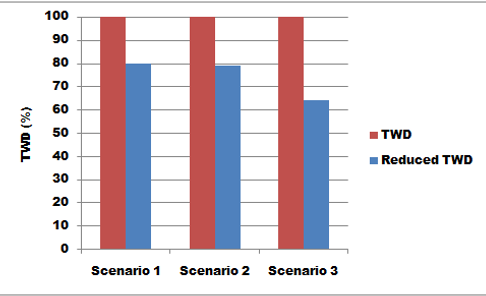RESULTS
The Results of the investigation are presented as the reduced TWD (due to WSUD method) as compared with the initial TWD (where no WSUD method is applied). This is done across all scenarios within every method that was investigated.
All 4 scenarios of the rainwater harvesting (RWH) method give estimates on the TWD reductions that are possible.
Scenarios 2 and 3 give similar results, while scenario 1 has the lowest reduction since it is limited to 1 end-use.
30% represents a significant reduction of the TWD, and while 19% and 23% reductions are lower, they are still not insignificant.




RAINWATER HARVESTING
GREYWATER HARVESTING
WATER EFFICIENT DEVICES
This greywater harvesting (GWH) method also shows good reduction on the overall TWD.
A reduction of 36% is more than a third of the overall TWD.
The TWD reductions for each of the water efficient devices (WED) scenarios were also calculated.
While these reductions are very high, with 46% for high efficiency devices, it must be noted that these are based on the assumption that every end-use is using a water efficient device.
These percentages show what is possible if the use of water efficient devices is properly implemented.


WSUD
Water Sensitive Urban Design
